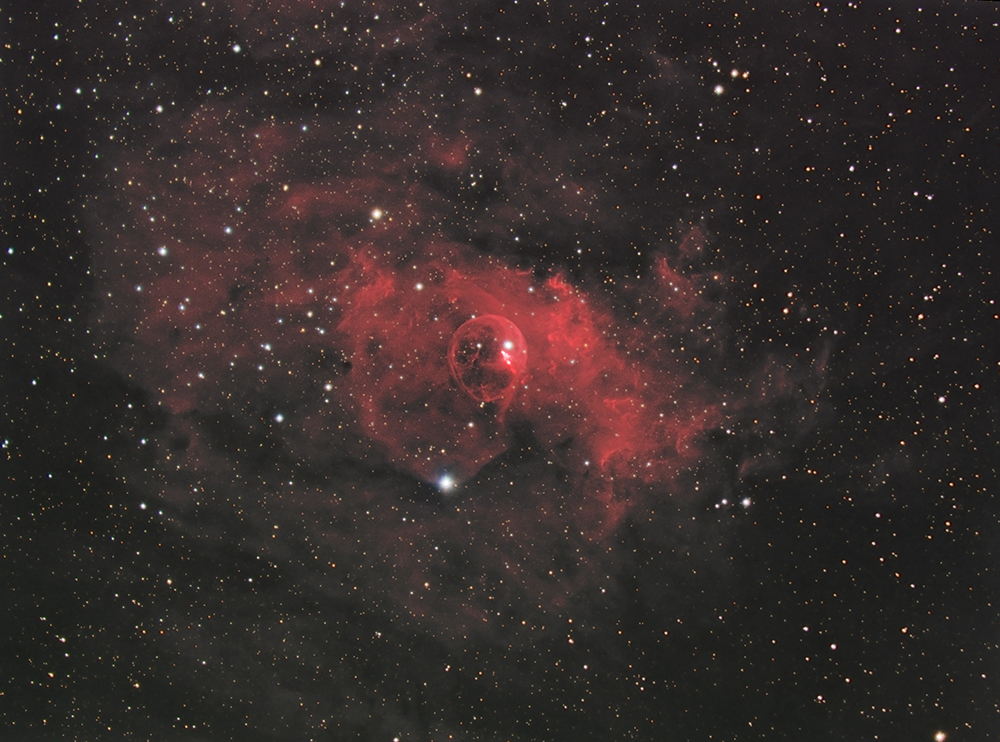NAME:
CATALOGUE:
OBJECT TYPE:
CONSTELLATION:
DISTANCE:
APPARENT MAGNITUDE:
APPARENT SIZE:
DIAMETER:
DISCOVERY:
BEST VIEWED IN:
RIGHT ASCENSION:
DECLINATION:
TELESCOPE:
DATA GATHERED:
EXPOSURES:
TOTAL TIME: |
|
The Bubble Nebula
NGC 7635 / C11
Emission Nebula
Cassiopeia
8,000 light years
10.0
15 x 10 arcminutes
35 light years
1787, William Herschel
October
23h 21m 29s
+61º 17’ 37”
Celestron EdgeHD 800 & 0.7x Reducer
5 nights, August & September 2014
Hα = 9 x 1200s & 9 x 1800s
RGB = 6 x 600s each
10 hours 30 minutes |


